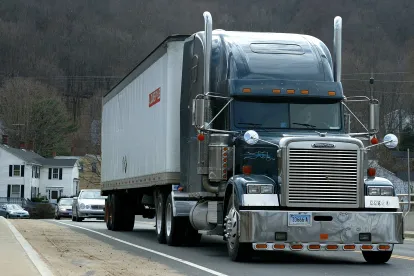Pilot program, proposed legislation may open long-haul trucking to drivers 18 to 20. Safety groups cite data concerns.
The leading cause of death among fifteen to twenty-year-olds is motor vehicle crashes. It’s the fodder of Hollywood storylines and parental worries. The stereotype of a distracted teenage driver is deeply entrenched in our culture – and the federal government is considering opening long-haul trucking to drivers as young as eighteen.
Currently, drivers under twenty-one may not cross state lines while operating a commercial motor vehicle. What are the proposed changes? And what are the arguments?
A Federal Pilot Program and Bipartisan Legislation
A pilot program through the Federal Motor Carrier Safety Administration (FMCSA) aims to assess the risks of allowing truckers as young as eighteen to cross state lines.
The program seeks to recruit eighteen to twenty-year-olds who already hold a commercial driver’s license (CDL) and complete a probationary period, as well as nineteen and twenty-year-old commercial drivers who have one year of intrastate trucking experience and 25,000 miles.
The program dovetails with proposed legislation in Congress, known as the DRIVE-Safe Act, that proposes dropping the legal age for driving a commercial motor vehicle across state lines to eighteen.
A Shortage of Truckers
The driving argument behind the proposed changes focuses on a shortage of truckers. Industries that rely on trucking have spoken out in favor of changing the age limit for long-haul trucking. And trucking companies say they want to recruit younger drivers in hopes of lowering turnover.
Yet national safety groups, such as Advocates for Highway and Auto Safety, argue that the shortage comes from problems within the industry – such as long hours and unsustainable working conditions that won’t be addressed by the pilot program or proposed legislation.
Will Younger Drivers Lead to More Accidents?
The proposed federal pilot study aims to learn if commercial drivers ages eighteen to twenty are really more of a risk. While opponents of lowered age requirements have argued that Congress should wait for the results of the study before considering legislative changes, we do already have some data on younger drivers and the challenges they face.
The Center for Disease Control (CDC) compiles statistics on teen drivers and why they’re more likely to be in accidents. Common reasons cited include inexperience, distractions, and an increased likelihood of speeding.
The pro-changes side argues that concerns such as inexperience are less of a factor for commercial drivers because of their extensive training. Yet scientific research has shown that human brains continue to develop into the mid-twenties. Evidence of this continued development plays out in the numbers. Auto insurance rates famously drop at age twenty-five – suggesting that insurance companies, whose livelihood comes from understanding driving risks, believe that age matters.
Trucking statistics support the same conclusion. Nineteen to twenty-year-old commercial drivers are six times more likely to be involved in a crash resulting in a fatality.
What Will Happen Next?
Currently, the DRIVE-Safe Act has yet to be passed by Congress, and the incoming Biden administration could end or heavily revise the FMCSA pilot program. In the meantime, the percentage of trucker fatalities in 2019 and the first portion of 2020 have increased – lending fuel to groups opposed to the changes.



 />i
/>i
